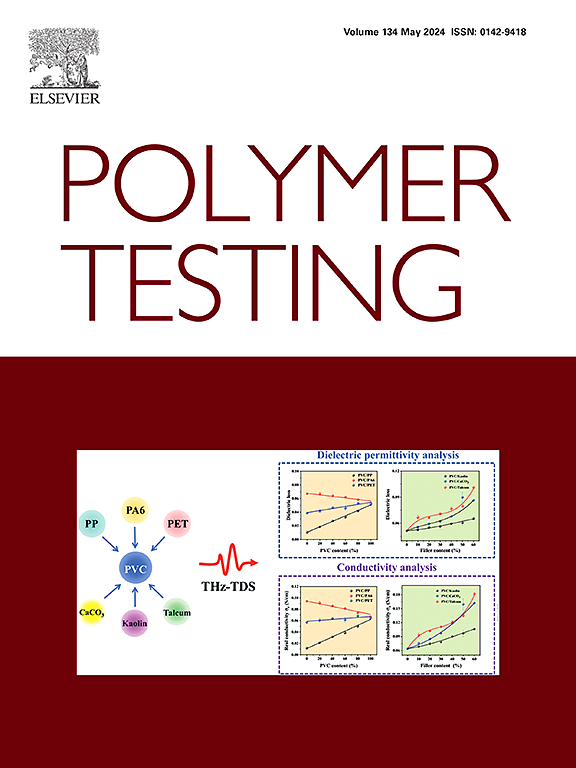Understanding the post-curing behaviors of polymethylacrylimide: Curing kinetics and molecular mobility
IF 5
2区 材料科学
Q1 MATERIALS SCIENCE, CHARACTERIZATION & TESTING
引用次数: 0
Abstract
In this study, the post-curing kinetic, molecular mobility and mechanical behavior of polymethylacrylimide (PMI), synthesized from methacrylic acid and methacrylonitrile, were systematically investigated. Differential scanning calorimetry results identified three distinct temperature zones during the post-curing process, which represented different types of curing reactions. Model-free kinetic methods were used to evaluate the post-curing kinetics of PMI materials. Fourier transform infrared spectroscopy demonstrated that the cyclization of anhydride groups predominantly occurred at lower post-curing temperatures, while the decomposition and transformation were observed at higher temperatures. Meanwhile, there was a progressive formation of imide rings with the increase of post-curing temperature. In addition, the molecular segment mobility of PMI materials was investigated via dielectric relaxation spectroscopy, and molecular segment mobility was gradually restricted during the post-curing process, indicated the formation of crosslinked network structure. Those changes of microstructures agreed well with the evolution of compressive properties. This study provides insights into the curing kinetics and structural evolution of PMI during post-curing process, offering guidance for optimizing post-curing conditions to achieve superior mechanical performance.

了解聚甲基丙烯酰亚胺的固化后行为:固化动力学和分子迁移率
本文系统地研究了由甲基丙烯酸和甲基丙烯腈合成的聚甲基丙烯酰亚胺(PMI)的固化后动力学、分子迁移率和力学行为。差示扫描量热法结果确定了固化后过程中三个不同的温度区,代表了不同类型的固化反应。采用无模型动力学方法对PMI材料的固化后动力学进行了评价。傅里叶红外光谱分析表明,在较低的固化温度下,酸酐基主要发生环化反应,而在较高的固化温度下则发生分解和转变。同时,随着后固化温度的升高,亚胺环逐渐形成。此外,通过介质弛豫光谱研究了PMI材料的分子段迁移率,发现在固化后的过程中,分子段迁移率逐渐受到限制,表明形成交联网络结构。这些微观结构的变化与压缩性能的演变符合得很好。本研究揭示了PMI在后固化过程中的固化动力学和结构演变,为优化后固化条件以获得优异的力学性能提供了指导。
本文章由计算机程序翻译,如有差异,请以英文原文为准。
求助全文
约1分钟内获得全文
求助全文
来源期刊

Polymer Testing
工程技术-材料科学:表征与测试
CiteScore
10.70
自引率
5.90%
发文量
328
审稿时长
44 days
期刊介绍:
Polymer Testing focuses on the testing, analysis and characterization of polymer materials, including both synthetic and natural or biobased polymers. Novel testing methods and the testing of novel polymeric materials in bulk, solution and dispersion is covered. In addition, we welcome the submission of the testing of polymeric materials for a wide range of applications and industrial products as well as nanoscale characterization.
The scope includes but is not limited to the following main topics:
Novel testing methods and Chemical analysis
• mechanical, thermal, electrical, chemical, imaging, spectroscopy, scattering and rheology
Physical properties and behaviour of novel polymer systems
• nanoscale properties, morphology, transport properties
Degradation and recycling of polymeric materials when combined with novel testing or characterization methods
• degradation, biodegradation, ageing and fire retardancy
Modelling and Simulation work will be only considered when it is linked to new or previously published experimental results.
 求助内容:
求助内容: 应助结果提醒方式:
应助结果提醒方式:


